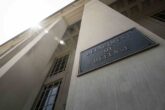February 03, 2021
The Cyber Maritime Environment: A Shared Critical Infrastructure and Trump's Maritime Cyber Security Plan
Last month, the unclassified version of the Donald Trump administration’s Maritime Cybersecurity Plan was published to the White House website … and then summarily taken down, apparently relegated to the trash bin marked “last president’s stuff.”
The plan was roughly 36 pages of mostly overly broad declarations about the insecurity of the seas; the reliance on, and therefore vulnerability of the United States to, maritime hijinks; and a thinly veiled warning about Chinese competitors and port technology. The document is officially dead letter mail, but here is why Washington cannot afford to let the plan’s points of emphasis sink obscurely into the murky ponds of Mar-a-Lago. Whether in competition or in war, the United States is a maritime country. Land security fails without sea supply defense.
The Maritime Cybersecurity Plan provides a basis upon which the Biden administration can build a whole-of-nation defense in a digitalized environment.
The Maritime Cybersecurity Plan provides a basis upon which the Biden administration can build a whole-of-nation defense in a digitalized environment. Yes, it has broad declarations that declare anew work that has long already been in motion for years like “develop risk modeling to inform maritime cybersecurity standards and best practices.” (Hint: It will look a great deal like the current National Institute of Standards and Technology Cybersecurity framework heavily informed by the excellent ongoing and rarely recognized work of the Coast Guard). The work is ongoing but, without the much needed urgency generated by public and policymaker pressure momentum will be lost. The gap between what engineers and maritime transportation experts know and what the policymaker and the public perceives as a cyber threat is a veritable ocean. The intent of the plan was to fire the starting gun for action in a field nearly entirely ignored by most non-maritime techies and policymakers.
Read the full article from War on the Rocks.
More from CNAS
-
Defense / Transatlantic Security
When Defense Becomes Destruction: Austria-Hungary’s Mistake and Ukraine’s RiskThis article was originally posted on War on the Rocks. The southeastern Polish city of Przemyśl, with its elegant 19th century Habsburg-era train station, remains one of the ...
By Franz-Stefan Gady
-
Defense / Transatlantic Security
Ukraine’s Catch-22 MomentThis article was originally published in the Financial Times. In Joseph Heller’s wartime classic, Catch-22, the protagonist Yossarian seeks out the US army surgeon Doc Daneeka...
By Franz-Stefan Gady
-
CNAS Insights | Budgetary Own Goals Undermine “Speed and Volume”
On November 7, Secretary of Defense Pete Hegseth laid out a plan to overhaul the Department of Defense’s (DOD’s) acquisition system. Placing an emphasis on delivering new capa...
By Philip Sheers, Carlton Haelig & Stacie Pettyjohn
-
Drones: Who Is Making the New Weapons of War?
From Ukraine and Russia to Gaza and Sudan, drones have become a key weapon of war. Which companies are making them, and profiting from this rapidly expanding but controversial...
By Stacie Pettyjohn




